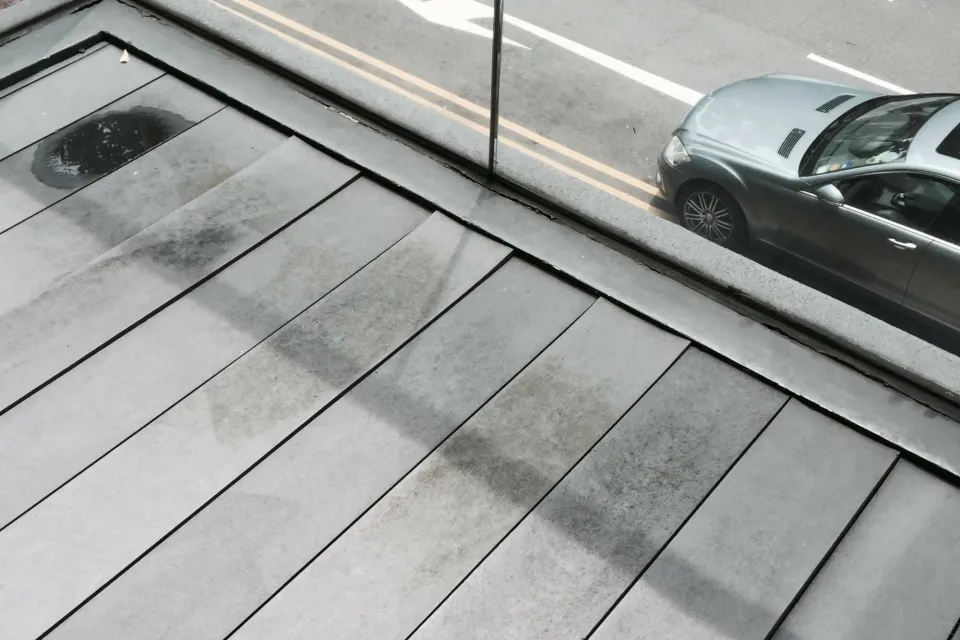-
About
-
Products
- By Timber Product
- Cladding
- Decking
- Joinery
- Screening
- Panelling
- View all
- By Application
- Exterior Cladding / Siding
- Exterior Rain Screen
- Exterior Roofing
- Interior Walls & Ceilings
- Soffits
- Screening, Fins & Battens
- Windows, Doors & Joinery
- Posts & Beams
- Accessories + Samples
- Coatings
- Fixings
- Samples
-
Shop
- Samples
- Timber Samples
- Architectural Sample Box
- View all
- Accessories
- Coatings
- Fixings
- View all
-
Resources
- By Resource Type
- Technical Data Sheets
- Guides & Manuals
- Technical Articles
- Profile Drawings
- View all
- How To
- How To Specify
- How To Install
- How To Maintain
- Projects
- Contact
HOLIDAY HOURS / All online orders made between 17 Dec to 4 Jan will be shipped from 5 Jan. Learn more here.
Comparing Composite Decking With Real Wood
Wood plastic composite decking (WPC) is making great headway into the exterior wood market, particularly in North America.
Many comparisons are made demonstrating the so called superior characteristics of this new product.
Unfortunately wood plastic composites typically do not live up to the hype. And because the majority of the producers have only been in the market for less than 5 years, they simply do not have the history to do so.
Significant problems with composite decking have been uncovered, particularly with products from newer, less experienced manufacturers.
So let’s make some comparisons on the key performance factors between timber decking and wood plastic composite decking.
1. Warping and Movement
Composite decking manufacturers claim that their products are more stable and do not move as much as timber or wood decking. This is clearly incorrect. For a start, composite decking is more likely to exhibit severe longitudinal shrinkage and expansion. That’s way every time you see a composite deck there is a big gap between joins (if it is dry).
Secondly composite decking has limited stiffness in application. That is because wood plastic decking is made up of wood dust and plastic, not fibres. This causes bowing and sagging of the composite decking, especially when the bearers or joists are not close enough together. Wood conversely has longer fibres which give it strength along the length. It is highly unlikely to sag when the correct joist spacings are used.
2. Cracking and Splintering
Wood plastic decking is not immune to cracking as manufacturers love to claim. Even top of the line composite decking is prone to cracking and breaking off, particularly around the end of the board, or the fixing clip.
WPC generally does not splinter, however neither does a decent timber decking board.
3. Mould Control and Maintenance
Major U.S producers of composite decking have been forced to adjust some of their claims from “Maintennance Free” to “Low Maintennance” – whatever that means. Regardless you will need to clean your composite or timber deck at least every six months. Check out the photo above.
Composite decking, just like wood is still subject to mould. Don’t believe the claims.
4. Environmentally Friendliness
Most composite decking manufacturers push the environmental angle – claims such as “environmentally friendly”, “no trees were cut down” are common place. If anyone thinks the combination of wood dust, plastics, preservatives, dyes, UV inhibitors and chemical additives under high temperatures is “environmentally friendly” they are sadly mistaken.
And how about end of life? It appears that many wood plastic composite manufactures have not planned that far. When an industrial material (plastic) that is recyclable is mixed with a biological material (wood) that is biodegradable, the result is a material that is neither recyclable nor compostable. In Cradle to Cradle speak, this is referred to as a "monstrous hybrid" and should be avoided.
How about plastic itself? Studies have shown microplastics are having a considerable effect on people and the plant. Wood plastic composite, which is subject to abrasive foot traffic is no exception. Small particles of plastic are getting into our waterways, and according to recent studies presented by École Nationales des Ponts et Chaussées microplastics are airborne in both indoor and outdoor air.
There is little substance to claims that wood plastic composite is an eco-friendly product. Wood from sustainably managed sources wins hands down - particularly if it is naturally durable and free from preservatives.
Our tip? Do your research into claims of environmental benefits. Ask for a reference project and check the material out for yourself. Ensure the reference project is at least 5 years old, and is fully exposed to the elements. Commercial jobs are best, as you will see worst case scenario.


